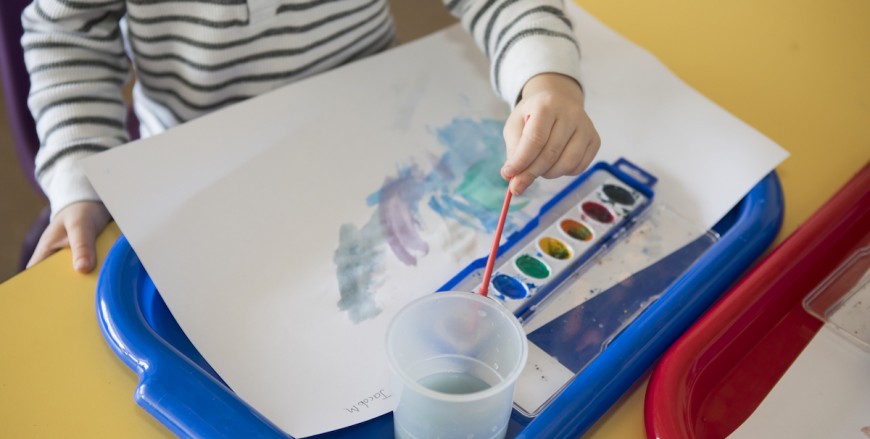
Music
- Preschool Music: These students will learn about music through singing popular children’s songs, dance, using props with music (puppets, bean bags, scarves, pictures) and stories that include songs.
- Kindergarten Music: These students will learn about music through singing, dance, and percussion instruments (maracas, drums, rhythm sticks, tambourines, cymbals). Starting in Kindergarten, students will also be introduced to music that we will sing at our school masses.
- 1st Grade Music: At this age, students will begin to look at music notation. They will learn basic note values and perform through instruments and dance. We will also learn the basics of a singing scale (do re mi) and we will begin to play songs using this scale on the handbells and tone bells. Students will continue to build on the repertoire of mass music they began to sing in kindergarten.
- 2nd Grade Music: We continue to build on our knowledge of music notation. We will start to follow along with the notation used in our school mass music and, at this point, be able to fully sing along with all of the songs used during mass. We will continue to perform our new vocabulary of music notation on classroom instruments as well as learn how to draw notes for the first time. We will learn about all of the band and orchestra instruments and families.
- 3rd Grade Music: Our music notation knowledge will continue to expand through singing and playing performance in class. A large portion of music class this year will be spent on reading and performing music on the recorder (students may borrow from school). Students who reach the highest level on the recorder will be invited to perform in the Spring Concert. Student will also continue to work on drawing basic music symbols and notes.
- 4th Grade Music: Students will perform music notation and start improvisation using our many beautiful Orff Xylophones. I will begin to assign “parts” in music and we will learn how to put these parts together in an ensemble. We will also begin to sing in 2 parts and learn the basics of harmony.
- 5th Grade Music: Students will continue to build on their musical ensemble by using more intricate rhythmic and tonal patterns in their singing and performance of percussion instruments. Orff Xylophones will continue to be integrated in the learning process, especially when using the element of improvisation. Students will also learn about the beginnings of music history. They will also continue their singing and improve their ability to sing in harmony.
- 6th Grade Music: Students at this level are expected to be able to read, write, and understand the music that they performing during class and mass. We will also continue to strengthen ensemble performance in class through singing and instrument performance. We will continue our study of music history.
The Arts
Miss Meranto
Our Art program is headed by Miss Meranto. The Art Curriculum follows NYS Standards for the Performing Arts and Miss Meranto also incorporates many of the core subjects which include Math, Science and Social Studies.
Pre-K: Developing small motor skills (cutting, gluing and tracing), color recognition, listening and following 3-step directions.
Kindergarten: Developing small motor skills but at a more advanced level, color and shape recognition, elements of art (patterns, color, texture, etc.), following basic directions (4-step).
Grades 1 and 2: Elements of art, following more advanced directions (5-step), drawing techniques, 3 dimensional work, exploring art materials.
Grades 3, 4 and 5: Elements of art, drawing techniques, art units, exploring different art media, incorporating core subjects with art, art history/famous artists, art vocabulary.
Grade 6: Elements of art, drawing and shading techniques, design, exploring different art media, incorporating core subjects with art, art units, studio art, art history/famous artists, art vocabulary.

